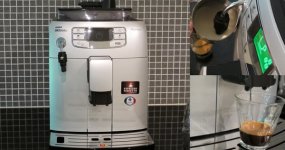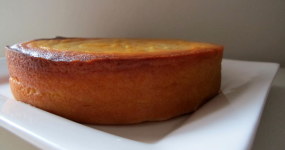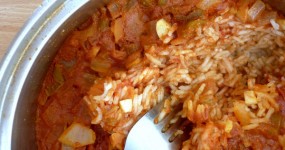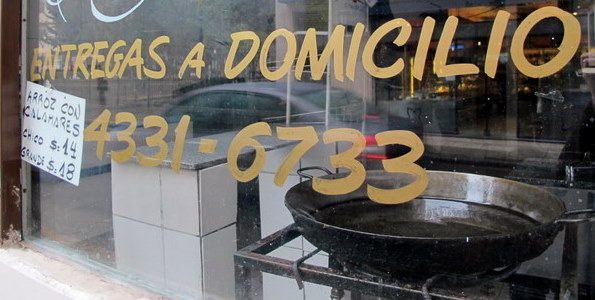There’s an interesting phenomenon in Argentina. You have your age-old coffee culture, your beautiful ornate cafés all over Buenos Aires, the daily Argentinean ritual of morning and afternoon (or evening) coffee. And then you have your ‘coffee’.
The espresso here is, dare I say it, terrible, and many extranjeros will agree with me on this. It doesn’t matter what your order – cafe con leche (flat white), espresso, cappuccino, it will be scaldingly hot, weak as piss and watery to boot. So you’ll be sitting in a cafe, be it dingy or grandly ornate, and you’ll decide it’s time to give up on coffee altogether. And there’s plenty of time to make that decision, as the time between a mozo setting down your coffee and it being cool enough to take a sip averages 10 minutes.
I was here 2 years ago so I knew all this before I came back, but memory is a tricky thing and I fooled myself that somehow, somewhere I would find a decent espresso. I’m sure there’s one out there, somewhere. But I’m yet to discover it.
If anyone has any coffee (not café) recommendations for either Montevideo or Buenos Aires, sock it to me.
1. The Presentation of all things Food
Crisp white tablecloths without paper covers. The old-world charm of BA restaurants. And more recently, the beautifully arranged fruit and vegetable stands in every neighbourhood. Although the aesthetic can be homogeneous, there is something lovely about the Porteños’ eye for detail when it comes to food.
2. Cake is sold by weight
In panaderias, smaller cakes, pastries and biscuits from medialunas (small croissants or ‘half moons’) factures to alfajores are often sold by weight rather than quantity. There’s something very decadent about ordering half a kilo of a combination of meringue, dulce de leche and sponge cake to take away.
3. Fresh OJ
Fresh Orange juice is like running water here and not, in the words of Basil Fawlty, ‘rather sticky’. Cafés, restaurants and confiterias all make and serve it, as do some convenience stores and market stalls. It makes that breakfast of coffee and pastry seem a tad more balanced.
4. Garapiñadas
These sugar-coated nuts, usually peanuts or almonds, are cooked and sold by the side of the road in autumn and winter. In the mornings you can see the vendors wheeling their carts to their allocated spots for the day. It’s the kind of snack that is considered gourmet and is expensive where I come from, but here in Buenos Aires a small packet of garapiñadas costs only 2 or 3 pesos (about 50 Aussie cents). Freshly made and with fresh peanuts, they are more addictive than peanut butter. And since peanut butter doesn’t really exist here, they make a tasty substitute.
5. Delivery
One of the most fantastic things about this city, besides most restaurants being open until around 2:00 am is that practically anything you want can be delivered. You want empanadas at midnight? Done. A coffee and a medialuna at 10:00 am? No worries. Most shopfronts have their phone number displayed so that customer can ring up and order what they like. It’s not uncommon to see waiters with a covered tray in hand dodging traffic as they try not to spill coffee for someone a few doors down. There’s no minimum delivery and no delivery charge.
About me
 Sharing easy recipes, hunting down the best coffee. Honest accounts, nothing too serious. Read more...
Sharing easy recipes, hunting down the best coffee. Honest accounts, nothing too serious. Read more...Recent Posts
- Aerpress means no more shit #travelcoffee and #workcoffee
- Why I write and four ace bloggers who do it better
- The five best things I ate in London
- Shoreditch is awesome, airports are not
- I quit sugar? Do I bollocks.
- Cubao Street Food, Alexandria
- The Reformatory Caffeine Lab, Surry Hills
- Brewtown Newtown
- Stay caffeinated over Christmas
- Gumption by Coffee Alchemy, Sydney CBD
Popular posts this month…
 Review – Philips Saeco Intelia posted on January 10, 2012
Review – Philips Saeco Intelia posted on January 10, 2012  Sparkling Long Black posted on May 10, 2011
Sparkling Long Black posted on May 10, 2011  Kosher Whole Orange Cake posted on July 5, 2011
Kosher Whole Orange Cake posted on July 5, 2011  Vella Nero Coffee Couture, Sydney CBD posted on June 28, 2011
Vella Nero Coffee Couture, Sydney CBD posted on June 28, 2011  Fairy Bread posted on March 11, 2011
Fairy Bread posted on March 11, 2011  The quest for Mex part 2 – Feisty Chicken Burritos posted on December 21, 2010
The quest for Mex part 2 – Feisty Chicken Burritos posted on December 21, 2010  The quest for Mex part 1 – Mexican Red Rice posted on December 17, 2010
The quest for Mex part 1 – Mexican Red Rice posted on December 17, 2010  Gumption by Coffee Alchemy, Sydney CBD posted on December 13, 2013
Gumption by Coffee Alchemy, Sydney CBD posted on December 13, 2013
Disclaimer:
All opinions in this blog are mine, an everyday, real-life person. I do not accept payment for reviews and nor do I write sponsored posts. I do not endorse the content of the comments herein.












